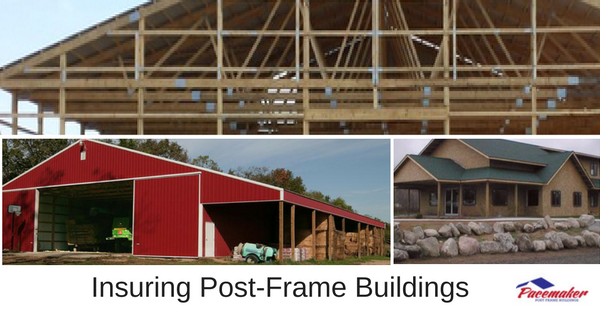 Post-frame buildings offer a wide range of advantages over conventional building construction. In addition to the economies of a shorter build time from start to finish, fewer and less expensive materials, simpler ground preparation and reduced labor, post- frame’s overall cost and proven durability typically result in lower insurance costs per square foot to protect your investment.
Post-frame buildings offer a wide range of advantages over conventional building construction. In addition to the economies of a shorter build time from start to finish, fewer and less expensive materials, simpler ground preparation and reduced labor, post- frame’s overall cost and proven durability typically result in lower insurance costs per square foot to protect your investment.
Over the life of the building, this savings on insurance premiums can amount to considerable savings.
Considerations when insuring post-frame buildings.
Investment
Beginning with the building construction costs and the potential replacement costs, post-frame buildings offer substantial savings. To realize the most savings over more traditional construction, you should work to get the best insurance rates by soliciting bids from several brokers and companies. Rates, as we know, can vary considerably, so it is important to commit the due diligence necessary to maximize your savings while purchasing the right coverage.
Rates, as we know, can vary considerably, so it is important to commit the due diligence necessary to maximize your savings while purchasing the right coverage.
Factors Influencing Insurance Premiums
Use or Occupancy Load
No matter what type of construction, the first question will tend to address how the building will be used. Whether the building is a farm structure, commercial or residential will determine the insurance category. In the case of farm and commercial uses, the types and quantities of material will typically be stored in the structure will also be addressed.
Commercial buildings should be covered for liabilities plus loss of use, inventory losses, and equipment.
Actual Cash Value or Replacement Costs
It is necessary to make a knowledgeable decision between an Actual Cash Value Policy and a Replacement Cost Policy.
In the first case, the owner receives cash value equal to the original cost minus depreciation. In the second instance, the building may be completely replaced to its original condition, but only up to the value of the policy.
If costs have risen beyond the policy value, you will need to make up the difference.
With a post-frame structure, the original and replacement costs are generally less than with other types of buildings. Materials used, labor employed and design costs are often less.
Materials Used
Materials do play a role in determining insurance costs. But whether the materials are post-frame or steel frame the premiums do not vary by more than 5% from the most combustible to the least combustible for commercial buildings.
It should be noted that even concrete and brick buildings are not totally indestructible in case of serious fire or severe acts of nature.
Protection
Another important element that may reduce insurance costs is protection related. Sprinkler systems, security alarms, reinforced windows, and state-of-the-art smoke, gas and fire detection systems are important to protect the occupants, building and contents.
Overall Durability
Severe hurricanes and devastating storms of recent years have proven that post-frame buildings are more likely to survive extreme wind conditions than most other structures.
In events like Hurricane Katrina, post frame buildings were still standing while other types of buildings were virtually flattened.
The extreme forces of the wind are transmitted to the opposing sides of the structure and into the ground. In addition, the flexibility of the structure produces a diaphragm action that allows enough “give” to allow flexibility while other structures cannot.
Buying Insurance
Owners of well-built post frame structures can be confident that their building is versatile, durable, reliable and reasonable to insure.
Review these elements with your insurance agent to purchase coverage that will protect your building and contents for the future.
Need recommendations for insurance carriers, or ready to talk about your new building construction? Contact us today!
